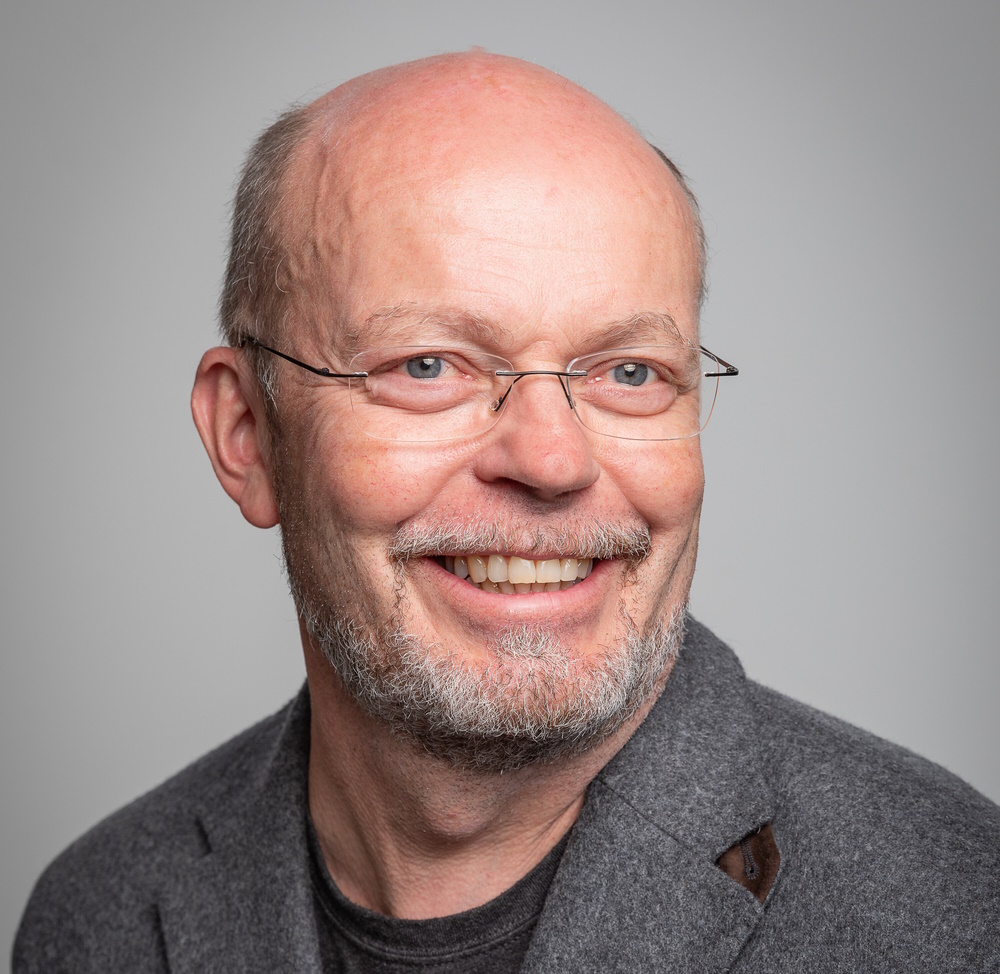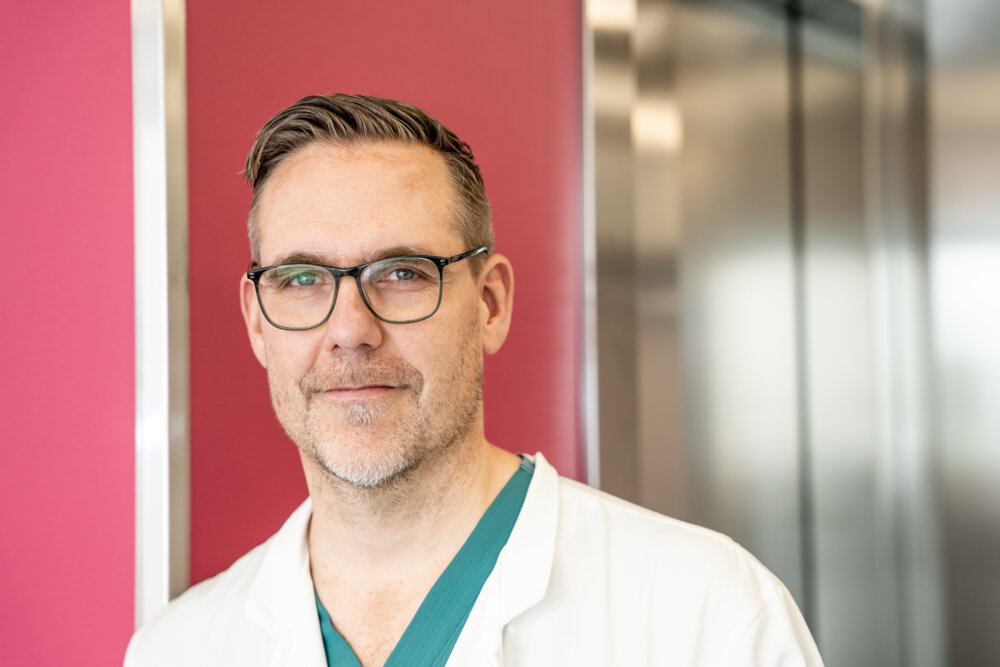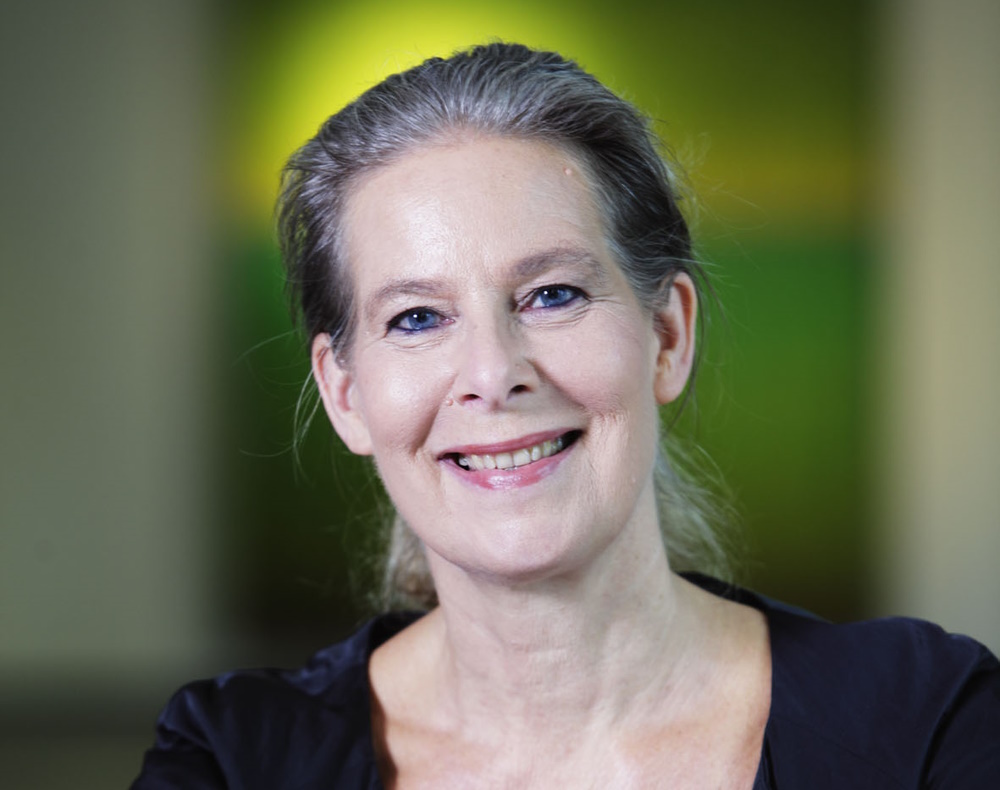Early prevention of diseases improves individual health outcomes and the capacity of the healthcare system. A study conducted at the University of Turku aims at discovering breakthroughs for improving public health and seeks pre-emptive ways to prevent diseases.
Let us stop for a moment to imagine what our healthcare system would be like if diseases were prevented more effectively. Patients prone to certain illnesses would be recognised before the onset of the illness, making early intervention with the risk factors possible. With preventive healthcare, there would be less need for major and expensive procedures. This would save resources and result in more personalised care of higher quality for patients that need more demanding care.
Does this sound good? Researchers of the Early diagnostics, prevention and interventions of non-communicable diseases (LIFE) think so and their goal is to understand the early steps of disease development better in order to enable preventive treatment.
“In many diseases, the risk factors are the same: immobility, poor diet and obesity.”
– Markus Juonala
The research consortium is focused on major non-communicable diseases related to genes and lifestyle, such as cardiovascular diseases, diabetes and Alzheimer’s disease. For now, the researchers are focused on prostate cancer and atrial fibrillation in particular, both of which are significant common diseases.
“In order to secure our healthcare system, people should live as long and healthy a life as possible. There has been progress in relation to cardiovascular diseases, for example, as the death rate in Finland has decreased to a quarter since the 1970s. At the moment, the biggest challenge is obesity, which has increased significantly among the public. In many diseases, the risk factors are the same: immobility, poor diet and obesity,” notes Professor of Internal Medicine Markus Juonala, who is one of the two principal investigators of the research consortium.

According to Markus Juonala, our standard of living has changed faster than our genes, which influences the risk factors for diseases.
Researchers of the University of Turku have already demonstrated in longitudinal demographic studies that the risks for several diseases can be decreased with lifestyle interventions in childhood.
The Cardiovascular Risk in Young Finns Study has shown that risk factors diagnosed in childhood predict arterial diseases, such as coronary artery disease, stroke, disorders of the cerebral circulation and circulatory disorders of the lower limbs. If the weight of those who were overweight in childhood has decreased to a regular level by adulthood, the risk for coronary artery diseases is smaller.
Another longitudinal study has shown that a lifestyle intervention lasting throughout childhood has been able to have a significant impact on the cholesterol levels of the participants. During the regular research visits taking place between the age of eight months and 20 years, the participants of the study were encouraged to exercise in various ways, eat healthy and avoid smoking.
“When we find the reasons behind the diseases, we can start creating early diagnostics.”
– Pekka Hänninen
Now, the aim of the researchers is to collect more precise information of the onset phase of the diseases with more advanced methods, in order for people to live healthy longer and to secure the capacity of the healthcare system.
“At the moment, the expected value of a healthy life is practically the same in Western and Latin American countries. In other words, pouring money into healthcare is not enough alone to add healthy years to people’s lives. Instead, we should be able to influence people's lifestyle. Interventions carried out early can be realised lightly, which also makes them cheap. When we find the reasons behind the diseases, we can start creating early diagnostics,” says Professor of Medical Physics and Engineering, Dean of Faculty of Medicine Pekka Hänninen, who is the other principal investigator in the research consortium.

Pekka Hänninen tells that new discoveries in research make it possible to request new samples from people who have participated in population research, which in turn results in more comprehensive data and more specific information.
Researchers Discovered Mechanism Causing Atrial Fibrillation
Early detection is important when it comes to atrial fibrillation, as for some patients who are suffering from atrial fibrillation the first evident symptom of the disease is a stroke. At the worst, the patient can die of the stroke.
Atrial fibrillation concerns four percent of the population in Finland and is particularly common among the ageing population. It is the most common long-term heart rhythm disorder that is often connected with hypertension, sometimes also valvular heart disease or coronary artery disease. The challenge in atrial fibrillation treatment is its early diagnosis in particular, as its causes have remained unknown.
In relation to this, the research group led by Associate Professor of Cardiology Tuomas Kiviniemi has just recently made an important breakthrough. They found an intracellular signalling pathway that seems to cause atrial fibrillation. When that pathway is blocked, atrial fibrillation appears to be fixed.
“We could try to block the operation of that specific signalling pathway with drugs, which would enable drug development for atrial fibrillation. This is the next step of the research but it requires several years of work,” says Kiviniemi.

In one of the studies led by Tuomas Kiviniemi, the aim is to find out whether closing the atrial appendage would be an effective way to prevent a possible stroke in cardiac surgery patients.
The cardiologists of internal medicine and researchers at the Department of Computing at the University of Turku have developed two devices that can be used at home for early detection of atrial fibrillation. Their functionality as part of healthcare is currently being tested. One is a mobile application for detecting atrial fibrillation, which the patient holds on their chest. The other one is a sensor placed under a mattress, which also detects atrial fibrillation from the patient’s heart beats.
“We study patients who have required hospital care due to cardiac symptoms with these devices. If the devices are proven useful, they could be used in the future to screen the same patient group that has an increased risk for atrial fibrillation,” says Kiviniemi.
The devices would enable the detection of atrial fibrillation in high-risk patients so that screening would burden healthcare very little. When an automated sensor is placed under the patient’s mattress for three months and the results registered by the sensor are checked after that, the workload of healthcare personnel remains small.
”In the future, we will most likely witness an explosive growth in how data collected by smart devices are used in healthcare.”
– Tuomas Kiviniemi
The devices’ accelerometers are used to detect atrial fibrillation. In a phone, the accelerometer detects the change when the phone is turned from a vertical position to a horizontal position, making the screen turn as well. Researchers came up with an idea to use this top technology to detect atrial fibrillation.
“In the future, we will most likely witness an explosive growth in how data collected by smart devices are used in healthcare. However, the risk in this is that there will be several false positive results creating unnecessary work. Therefore, it is important to study the benefits of the devices,” notes Kiviniemi.
The researchers are currently studying whether these same devices could also be used to detect other diseases. There has already been promising preliminary results related to heart failure and myocardial infarct detection, but the study is still in progress.

Studying Cellular Proteins Reveals Development Mechanisms of Diseases
Health, diagnostics and drug development is one of the six strategic research and education profiles of the University of Turku. The Academy of Finland has granted the Profi 6 funding that supports research profiling of universities to the LIFE research consortium for the term 2021–2026.
This funding has been used to strengthen the operation of the Turku Proteomics Facility of Turku Bioscience Centre, among others. The Facility provides top-level methods for comprehensive research of proteins, which can be used by LIFE researchers and other actors both inside and outside the University.
“We can get information about various diseases with protein measurements. In fact, the majority of the measurements conducted at a hospital laboratory are related to measuring proteins. Proteomics refers to comprehensive study of proteins in a sample, mainly with methods based on mass spectrometry. Proteomics is a tool in basic research, with which we can get information on the mechanisms of a disease,” explains Director of Turku Proteomics Facility Otto Kauko.

Otto Kauko finds that automation is currently accelerating the development of proteomics, which is likely to enable the simultaneous processing of a greater number of samples in the future.
Proteomics can be used in many different disciplines, when the function of proteins needs to be studied. Proteomics can also identify biomarkers that indicate risks for certain diseases, which may be beneficial for the early prevention of diseases.
“Our unit and research projects are linked to the regulation of cancer cell growth. We are looking for different mechanisms that are essential for the growth of cancer cells. Sometimes, treating cancer with drugs may lead to the activation of an alternate growth signalling pathway. We identify these processes in order to be able to target them with more effective treatment in the future,” describes Kauko.
“Proteomics is a tool in basic research, with which we can get information on the mechanisms of a disease.”
– Otto Kauko
Understanding proteins is important as they are responsible for all cellular activities. With proteomics, we can identify the proteins in a cell, measure the protein concentration and see the changes that occur if the cells are treated in a certain manner.
The research group led by Kiviniemi will also use proteomics in the early detection of atrial fibrillation. Their goal is to find tracers in blood flow that could help to identify people who will develop atrial fibrillation in the future.
Gut Microbiota Associated with Prostate Cancer
Prostate cancer is one of those diseases where the reasons for onset are still poorly known. In Finland, prostate cancer is the most common cancer for men and the second most common cause for cancer deaths. The disease is common in other Western countries as well, and researchers assume that the causes of the disease are in fact related to a certain lifestyle. It is thought that insufficient physical activity and a diet containing a lot of animal products and processed fats increase the risk for the disease.
Associate Professor in Urology Peter Boström and his team have observed that prostate cancer patients seem to have a somewhat different gut microbiota than those not diagnosed with prostate cancer.
“At the moment, we are studying the lifestyle and gut microbiota of prostate cancer patients in order to be able to identify the unfavourable microbiota profile associated with the risk for the disease. The assumption is that lifestyle influences the risk of prostate cancer via gut microbiota,” tells Boström.
“Human gut microbiota can be modified rather easily without risks.”
– Peter Boström
The next step in the study is to find out whether gut microbiota has a role in the development of the disease, and which bacteria cause harm and which are beneficial. After this, the knowledge on gut microbiota could perhaps be used in an individual risk assessment for prostate cancer.
“Human gut microbiota can be modified rather easily without risks. Changing a diet is the easiest way to accomplish this but also pro- and prebiotics, antibiotics, targeted microbial treatments and fecal microbiota transplants can be used,” says Boström.

According to Peter Boström, researchers have yet to discover when the first changes leading to prostate cancer in a patient's body take place – it can even be in the fetal phase, during teenage years or much later.
He sees great possibilities in the studies that focus on the association between prostate cancer and gut microbiota, even though there is still a long way to go before it will benefit public health.
“In theory, we could be able to influence the disease occurrence if people received information on their cancer risk and they could then modify their lifestyle or microbiota accordingly. If prostate cancer runs in the person's family, the disease could perhaps be prevented by taking a daily pill containing good bacteria. I believe that many people would be willing to commit to this type of preventive treatment without harmful side effects,” notes Boström.
If put simply, healthcare is facing two possible future scenarios according to researchers. If we do not make any changes, we will exceed the capacity of healthcare and eventually we will be forced to make difficult decisions about who will and will not receive treatment. Compared to this, the researchers’ vision sounds like a much better option: we provide preventive treatment for as many diseases as possible, which is when people live healthier longer and the capacity of healthcare is secured.
Text: Jenni Valta
Translation: Saara Yli-Kauhaluoma
Illustrations: Nelli Ahosola
Photos: Hanna Oksanen
The Faculty of Medicine at the University of Turku is celebrating its 80th anniversary this year. The Faculty was founded in 1943 to meet the needs of the wartime Finnish society, and since then it has promoted health and well-being and been an active social contributor. The Faculty organises versatile anniversary programme throughout the year and warmly welcomes everyone to participate in the events.
In the spring, the anniversary can be seen on the streets of Turku as the procession of doctors and honorary doctors, when the Faculty celebrates its own Ceremonial Conferment of Doctoral Degrees. On Friday, 27 May 2023, 144 doctors and about a ten jubilee doctors will be conferred. In addition, five honorary doctors will be conferred: Faculty is Chief Physician Hanna Nohynek from the National Institute for Health and Welfare, Professor Emeritus Mikael Knip of the University of Helsinki, Professor Manuel Tena-Sempere from the University of Córdoba, Professor Björn Klinge from the Karolinska Institutet, and Professor Adelaida Zabalegui Yárnoz from the University of Barcelona and Hospital Clínic de Barcelona. The public is welcome to the Studia Generalia lectures given by the honorary doctors on 25 May 2023.
“It is a remarkable academic tradition and it lends a particular flare to our anniversary year. In the Ceremonial Conferment, we celebrate science and researchers,” says Dean Pekka Hänninen of the Faculty of Medicine.

Chief Physician Hanna Nohynek from the National Institute for Health and Welfare will be conferred as an honorary doctor in the Ceremonial Conferment of Doctoral Degrees of the Faculty of Medicine in May 2023.
The first week of October is a celebration week, during which the Faculty will focus on the future prospects of medical and health science research and education. The programme is open to everyone and focuses on how we can meet the challenges ahead, such as new pandemics and health risks related to the climate change.
As culture has a positive impact on well-being, the anniversary year programme of the Faculty is full of cultural events. In April, the Faculty participated in the Turku Philharmonic Orchestra's sold-out Diandra & Bond concert, in connection with which the Faculty presented its research and education in medicine and health sciences. During the celebration week, there will also be an art exhibition and dance performances in the Medisiina D building.
“The anniversary year is a great opportunity to learn more about the operation of the Faculty and the latests breakthroughs in medicine and health sciences. We warmly welcome everyone to the events of the anniversary year,” says Hänninen.
The anniversary year programme continues to be updated and the latest version is available at utu.fi/med80.
Text: Tilda Junko
Translation: Saara Yli-Kauhaluoma




